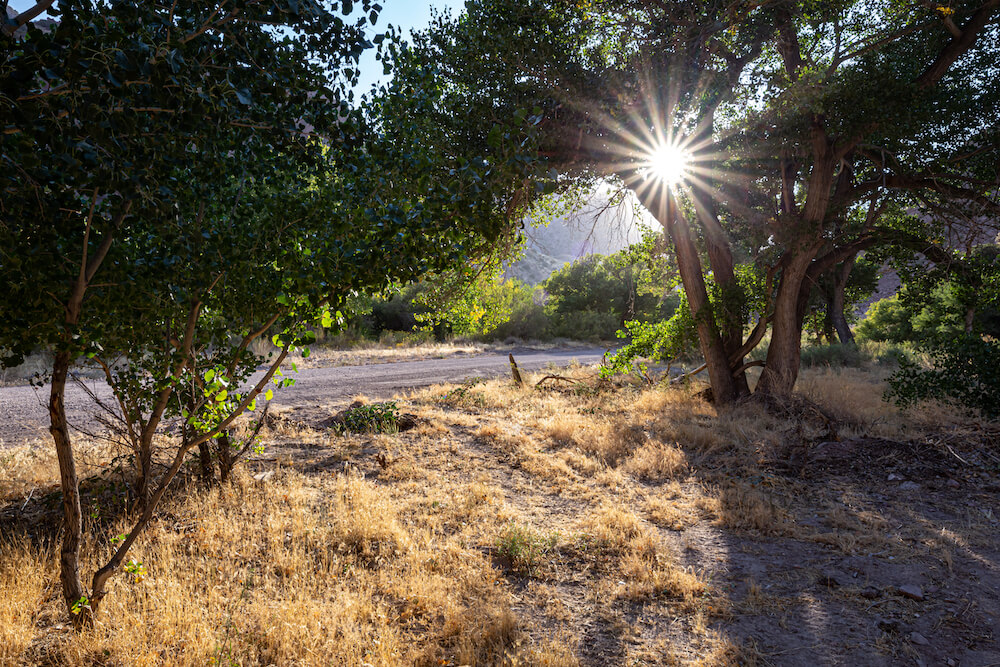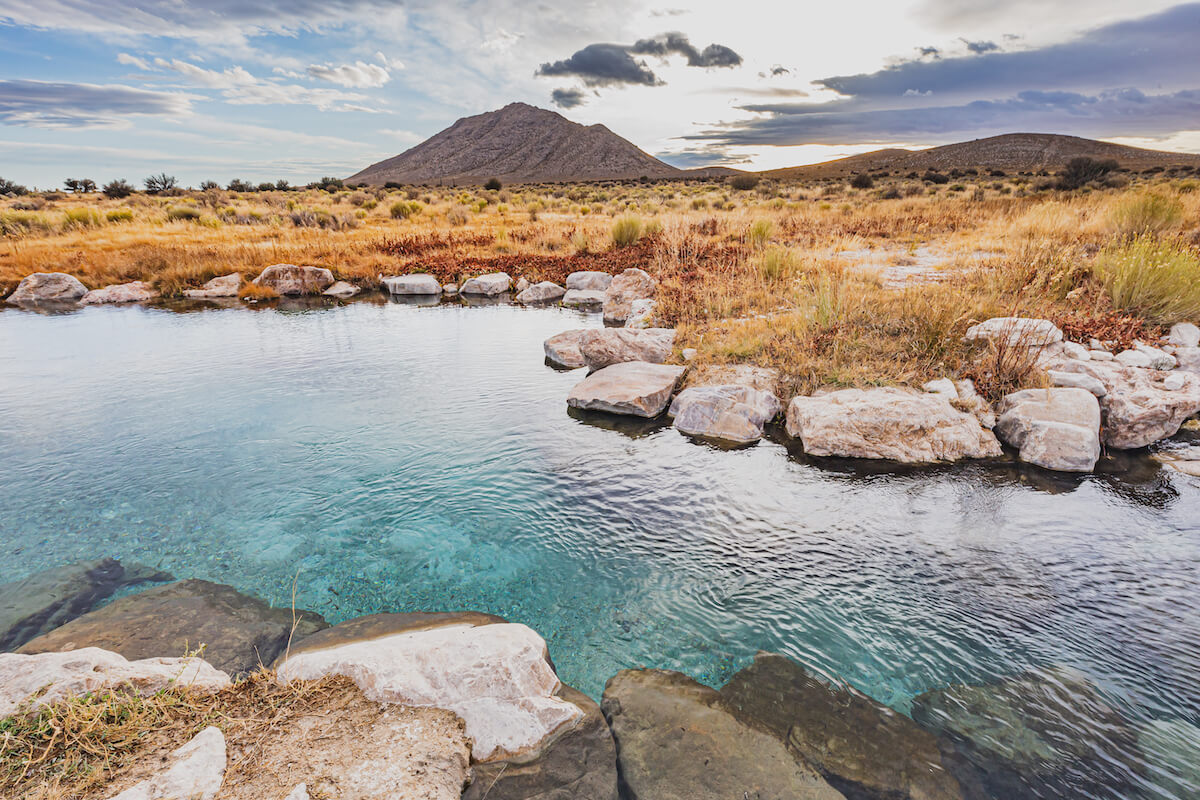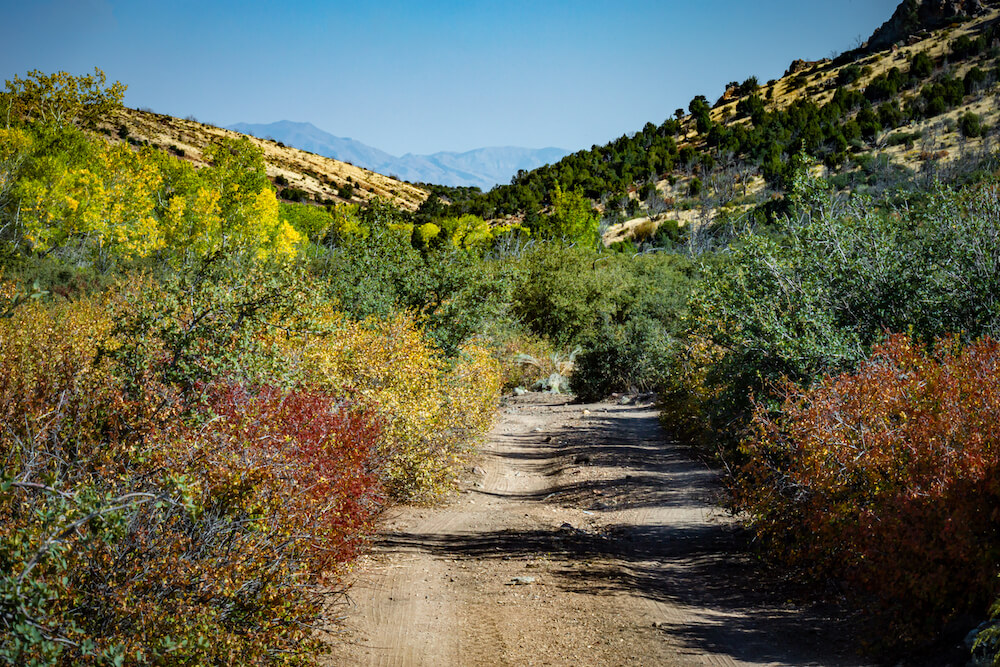Written and photographed by Justin McAffee
On a warm late-summer day, an old friend and I drove down some 50 miles of gravel road through a remote part of Nevada’s Tule Desert. We spotted a flock of golden eagles, and one even landed on a nearby Joshua Tree. The moment was magical. Yet the moment was fleeting as we looked at the overlay map of parcels the BLM would be selling to oil companies for pennies on the dollar, right where we stood.
In the coming weeks, my friend from the Sierra Club would take me much further into Nevada’s Great Basin where in total an area the size of Delaware is up for sale by the BLM. We took pictures to document what was at stake.
One year earlier, on a three-day journey through the Great Basin and beyond, down a small watershed that drains into Lake Mead, I had been through the same places with a group of native people from Nevada. These places we perceive as “empty” deserts are not at all empty. They are teeming with all sorts of value beyond some corporation’s profit margins. They are full of life, plants, animals, life-giving water as well as human culture.

My wife and I were there to film a three-day run with indigenous people who were opposed to the construction of a water pumping system and 300-mile pipeline that would take water from Eastern Nevada and deliver it to the Las Vegas Valley. This run they called a sacred run. For these spirited and determined runners, it was more of a prayer than a protest. It was a prayer for the water, animals, plants and their own way-of-life threatened by neverending development by the colonizer culture still occupying their ancestral lands.
On the second day of the run, my wife and I stood on a hilltop with Western Shoshone Elder Johnnie Bobb. He wanted to show us a special place that was along the route of the run. He said it was a sacred place where his people and neighboring tribes would meet and pray. There was evidence that ceremony had taken place at the site previously, with red ribbons tied to tree limbs.
Johnnie Bobb offered prayers and burned sage while we were there. He told us how important these lands were to his people. The bones of their ancestors were buried there since time immemorial. The very land itself was tied to his people. To have them taken away was like having a part of one’s self taken.
We looked out over the valleys and mountains, pondering the moment. These places are shrinking by the minute. In fact, natural habitats are disappearing in the American West at a rate of one football field in size every 2.5 minutes. That’s an area the size of Los Angeles every year.

Our species has lived in mostly wild spaces for the better part of 200,000 years. If the time period of our species is a football field, we’ve only lived with agriculture for the last half yard, and industrial civilization for an inch or two. Undeveloped natural lands are in our DNA. The lack of connection with nature for western culture particularly is an obvious explanation for so many of our societal ills.
This Great Basin is among the few precious natural spaces left. We must take a stand now and say enough is enough. We can’t continue to exponentially build and grow until all of these places are consumed and gone forever. We can’t stand by any longer hoping someone else will put a stop to this. If not now, then when? If not us, then who?
As the great photographer Ansel Adams once said, “It is horrifying that we have to fight our own Government to save the environment.” Yet this is exactly what we must do. We must not tolerate any longer the destruction of these ancestral homelands, the homes of plant and animal species, and the land we need for the Earth to heal. We must fight.
Overview
90 percent of our public lands are available to oil and gas drillers while only 10 percent are available for a focus on conservation and other values including recreation and wilderness ( https://www.wilderness.org/articles/article/open-business-and-not-much-else-analysis-shows-oil-and-gas-leasing-out-whack-blm-lands). So it’s no surprise that over the next 5 months, the BLM Ely district is offering up an area the size of Delaware to oil and gas companies. Their stated mission “to sustain the health, diversity, and productivity of America’s public lands for the use and enjoyment of present and future generations” is just a platitude. It’s mostly there to preserve potential profits for corporations.
Opening up these areas to fracking seems particularly ill-conceived, considering its a desert, water is already scarce, and they will be threatening the ground water, aquifers and water ways that feed our drinking supplies and feed plant and wildlife. Many of these parcels have watersheds that feed into Lake Mead, the primary drinking water for Las Vegas.
This is all part of taken lands that many indigenous people who still live on or near, and hold sacred. One of the areas we went to with Johnnie Bobb, the Wester Shoshone elder, where he did a blessing, was on a parcel up for sale.

Should these lands be explored for oil, there will be roads and other development necessary that will disrupt that natural habitat of flora and fauna of the Great Basin and Mojave, areas where the Joshua Tree and the desert tortoise are endangered.
Total Acres
The acreage for the March and February lease sale is 355,195 acres. The November lease sale is a total of 273 parcels encompassing 574,075 acres. The December lease sale is a total of 451 parcels encompassing 777,197.
Total in the Ely District: 1,706,467 by March of 2020.
Delaware is 1,592,780 acres.
BLM November Sales
BLM December Sales
blm-accepting-comments-environmental-assessment-nevada-december-oil-and-gas-lease-sale
BLM February and March Sales:
Map of the parcels for sale
https://trout.maps.arcgis.com/apps/webappviewer/index.html?id=a32c002b49224660ac8cb0182b555483
Overview and Petition
This page has an overview of the issues. They tend to focus on the outdoor recreation economy and the attractive parks. But there is mention of the habitat threatened as well.

